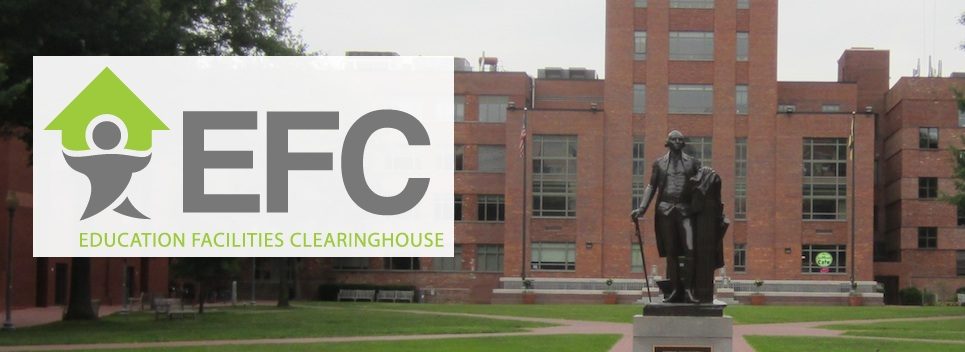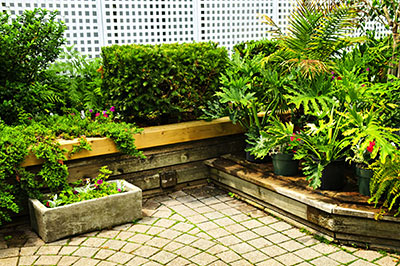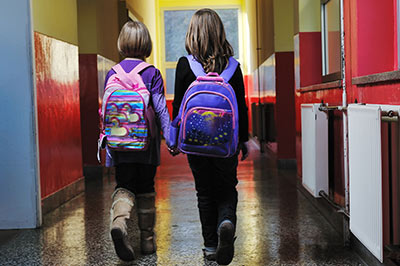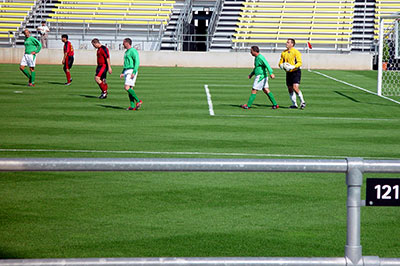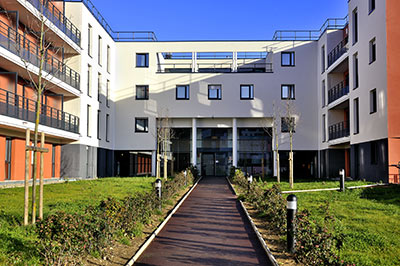By: Mark Cullen (Jun 26 2015). While interviewing a young child on his obsession with being indoors, Richard Louv leaned in towards the young lad and asked, “What is it about being indoors that you find so appealing?” “Why, that’s where the electrical outlets are,” he said. That day, back in 2004, the author decided to write a book exploring the importance of nature in the lives of young people: Last Child in the Woods. Although, it has been 10 years since Louv first published his landmark book, kids continue to suffer from “nature deficit disorder” and sequester themselves indoors. We are at risk of developing permanently hunched backs from looking down at our electronic hand held devices.
Tag: Healthy Schools
Early child development: Body of knowledge
Nature 523,286–289
As government education experts call for toddler literacy, and baby apps proliferate, are we losing sight of materials-based learning? Infant scientists and young explorers thrive in the open air and through free play, eager to grasp the world — literally.
Carbon-copy playgrounds. Cramped classrooms. 'Car park' school grounds. Across the industrialized world, these are the environments in which most young children are expected to play and learn; zoo enclosures can look more enriched. Studies are emerging that reveal poor design as a hindrance to learning in the very young, as damaging as militaristic drills. Meanwhile, frogspawn and starry skies — once the recruiting agents of science — are beyond many children's experience. Here, two leading practitioners in developing learning environments for the young set out what needs to happen.
Healthy School Facilities: Planning for “Good Repair” in Local Control Accountability Plans (LCAPs)
Center For City+Schools Webinar, 2014
Environmental and Health Impacts of Artificial Turf: A Review
Cheng, Hu, and Reinhard, 2014
With significant water savings and low maintenance requirements, artificial turf is increasingly promoted as a replacement for natural grass on athletic fields and lawns. However, there remains the question of whether it is an environmentally friendly alternative to natural grass. The major concerns stem from the infill material that is typically derived from scrap tires. Tire rubber crumb contains a range of organic contaminants and heavy metals that can volatilize into the air and/or leach into the percolating rainwater, thereby posing a potential risk to the environment and human health. A limited number of studies have shown that the concentrations of volatile and semivolatile organic compounds in the air above artificial turf fields were typically not higher than the local background, while the concentrations of heavy metals and organic contaminants in the field drainages were generally below the respective regulatory limits. Health risk assessment studies suggested that users of artificial turf fields, even professional athletes, were not exposed to elevated risks. Preliminary life cycle assessment suggested that the environmental impacts of artificial turf fields were lower than equivalent grass fields. Areas that need further research to better understand and mitigate the potential negative environmental impacts of artificial turf are identified.
Hazardous organic chemicals in rubber recycled tire playgrounds and pavers
Llompart, Sanchez-Prado, Lamas, Garcia-Jares, Roca, & Dagnac, 2013
In this study, the presence of hazardous organic chemicals in surfaces containing recycled rubber tires is investigated. Direct material analyses using solvent extraction, as well as SPME analysis of the vapour phase above the sample, were carried out. Twenty-one rubber mulch samples were collected from nine different playgrounds. In addition, seven commercial samples of recycled rubber pavers were acquired in a local store of a multinational company. All samples were extracted by ultrasound energy, followed by analysis of the extract by GC–MS. The analysis confirmed the presence of a large number of hazardous substances including PAHs, phthalates, antioxidants (e.g. BHT, phenols), benzothiazole and derivatives, among other chemicals. The study evidences the high content of toxic chemicals in these recycled materials. The concentration of PAHs in the commercial pavers was extremely high, reaching values up to 1%. In addition, SPME studies of the vapour phase above the samples confirm the volatilisation of many of those organic compounds. Uses of recycled rubber tires, especially those targeting play areas and other facilities for children, should be a matter of regulatory concern
Artificial Turf Football Fields: Environmental and Mutagenicity Assessment
Schiliro, Traversi, Degan, Pignata, Alessandria, Scozia, Bono, & Gilli, 2012
The public has recently raised concerns regarding potential human health and environmental risks associated with tire crumb constituents in the artificial turf of football fields. The aim of the present study was to develop an environmental analysis drawing a comparison between artificial turf football fields and urban areas relative to concentrations of particles (PM10 and PM2.5) and related polycyclic aromatic hydrocarbons (PAHs), aromatic hydrocarbons (BTXs), and mutagenicity of organic extracts from PM10 and PM2.5. No significant differences were found between PM10 concentrations at an urban site and on a turf football field, both during warm and in cold seasons, either with or without on-field activity. PM2.5 concentrations were significantly greater at the urban site in the cold season as was the ratio of PM2.5 to PM10. BTXs were significantly greater at urban sites than on turf football fields on both on warm and cold days. The ratio of toluene to benzene (T/B ratio) was always comparable with that of normal urban conditions. The concentration of PAHs on the monitored football fields was comparable with urban levels during the two different sampling periods, and the contribution of PAHs released from the granular material was negligible. PM10 organic extract mutagenicity for artificial turf football fields was greater, whereas PM2.5 organic extract mutagenicity was lower, compared with the urban site studied. However, both organic extract mutagenicity values were comparable with the organic extract mutagenicity reported in the literature for urban sites. On the basis of environmental monitoring, artificial turf football fields present no more exposure risks than the rest of the city.
Bio-accessibility and Risk of Exposure to Metals and SVOCs in Artificial Turf Field Fill Materials and Fibers
Pavilonis, Weisel, Buckley, and Lioy, 2011
To reduce maintenance costs, municipalities and schools are starting to replace natural grass fields with a new generation synthetic turf. Unlike Astro-Turf, which was first introduced in the 1960’s, synthetic field turf provides more cushioning to athletes. Part of this cushioning comes from materials like crumb rubber infill, which is manufactured from recycled tires and may contain a variety of chemicals. The goal of this study was to evaluate potential exposures from playing on artificial turf fields and associated risks to trace metals, semivolatile organic compounds (SVOCs), and polycyclic aromatic hydrocarbons (PAHs) by examining typical artificial turf fibers (n=8), different types of infill (n=8), and samples from actual fields (n=7). Three artificial biofluids were prepared which included: lung, sweat, and digestive fluids. Artificial biofluids were hypothesized to yield a more representative estimation of dose than the levels obtained from total extraction methods. PAHs were routinely below the limit of detection across all three biofluids precluding completion of a meaningful risk assessment. No SVOCs were identified at quantifiable levels in any extracts based on a match of their mass spectrum to compounds that are regulated in soil. The metals were measurable but at concentrations for which human health risk was estimated to be low. The study demonstrated that for the products and fields we tested, exposure to infill and artificial turf was generally considered de minimus, with the possible exception of lead for some fields and materials.
Where we learn matters | Anisa Baldwin Metzger | TEDxHerndon
What do our schools say to our children? How does the way we design schools effect student learning?
Idle Free Schools
Environmental Protection Agency (2014)
The Idle Free Schools Toolkit includes all of the information needed to run an effective idling reduction campaign at a school in order to reduce student exposure to toxic vehicle exhaust. It also provides the resources to make this a student-run science or community involvement project, providing students with the opportunity to learn how to run a public service campaign while expanding their science and math skills.
Site Sustainability for Urban K-12 Schools
Summers Tremewan, 2015
Sustainability in the design of K-12 public schools in the United States is gaining momentum due to the environmental, educational, health, and financial benefits afforded students, staff, the district, and the wider community. Detroit Public Schools is no exception to this trend. However, as is often the case with sustainability in the built environment, Detroit Public Schools’ focus has been heavily biased toward the building systems and building envelope, with little attention given to sustainability on the site. While not incorporated into these projects initially, the absence of site sustainability presents an opportunity for improved environmental stewardship at these otherwise exemplary schools. This study provides a broad overview of sustainable site design techniques available to urban K-12 school renovations, specific and quantifiable recommendations for their execution, and an example application of those recommendations at Detroit’s Martin Luther King, Jr. Senior High School. Further, the study provides an evaluation of the application from the landscape architect’s perspective. Site sustainability techniques focused on in the study include stormwater management, landscape and irrigation, food systems and urban agriculture, and on-site energy generation, all from the point of view and discipline of the landscape architect attempting to design a functional, aesthetically-pleasing, and environmentally-stewarded school campus. Areas where Detroit is already a leader in sustainability are noted, such as with its Food and Nutrition Program and the incorporation of urban agriculture in its food system and curriculum. Affording Detroit Public Schools the tools necessary to accomplish its next frontier of sustainability, this study seeks to help cement the district’s leadership in this capacity.
